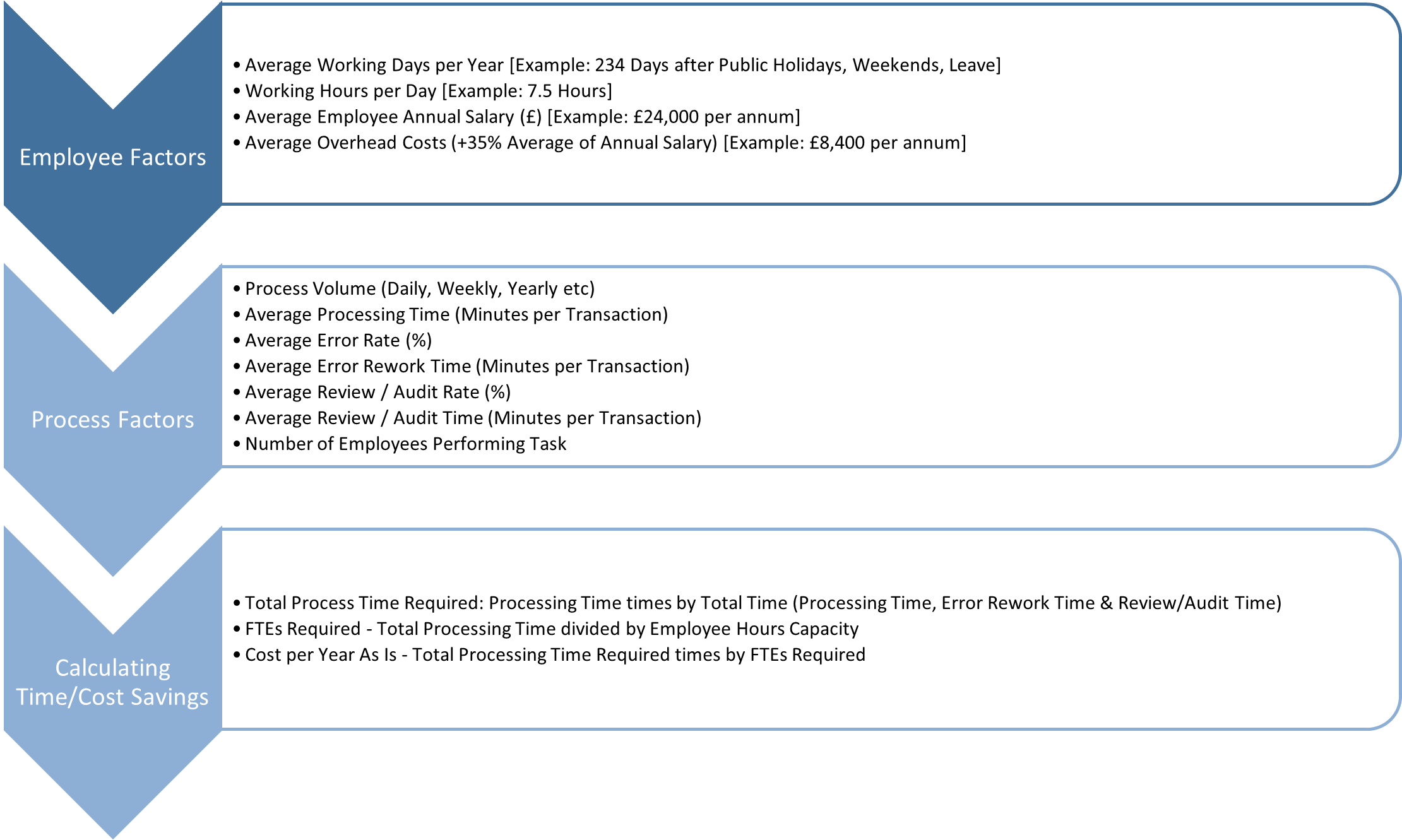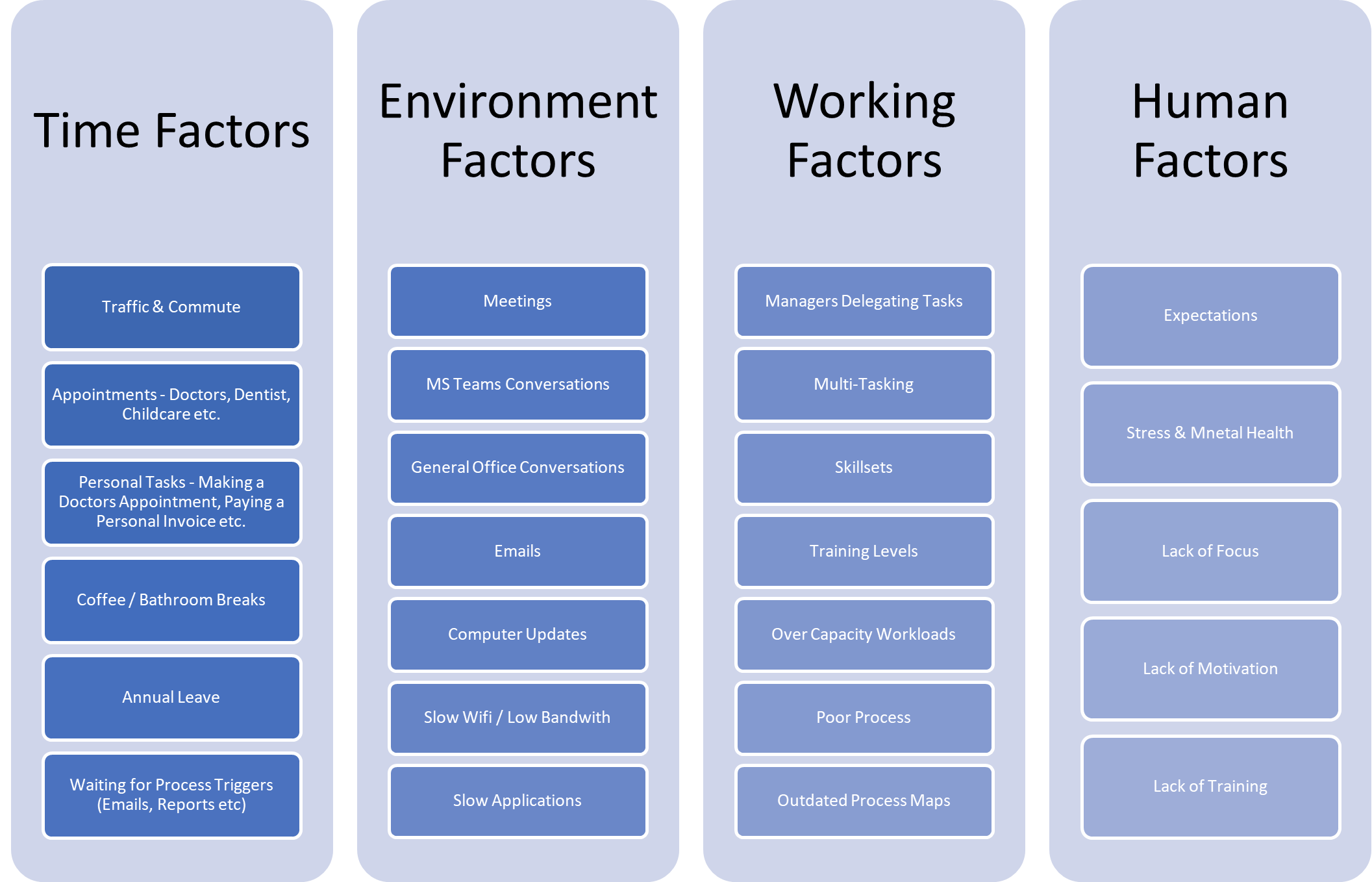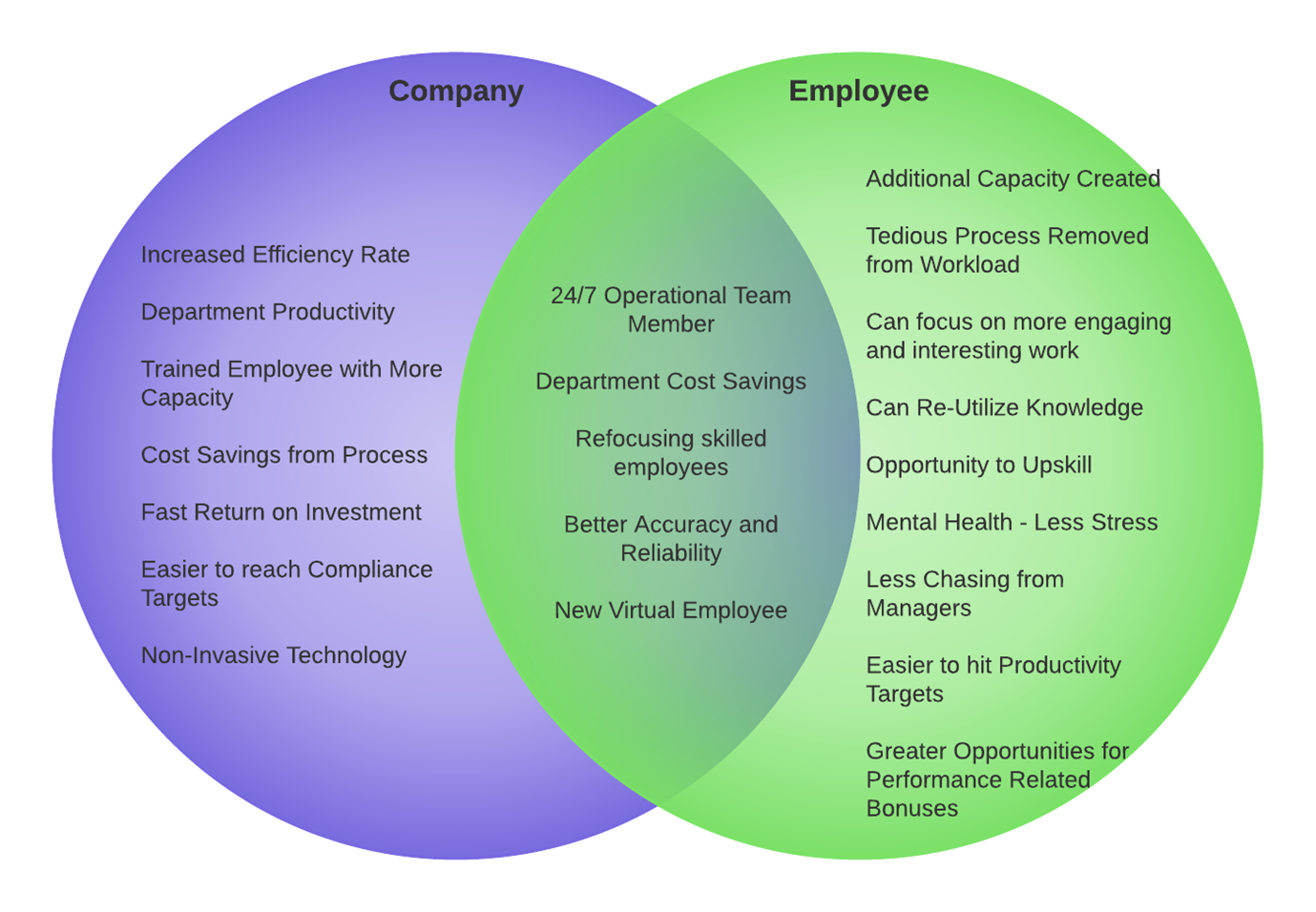Who benefits most from Automation? The Company or the Employees?
When introducing Automation into a company, the first instinct is often to state the benefits for the company, like Cost & Time savings – but the actual primary beneficiaries are the company's employees.
The benefits start at the Process Owner level, and benefits roll on to Managers and all the way through to the Company Owners.
How do we accurately calculate the cost and time savings delivered by Automation?
Many factors become apparent when calculating an Automation ROI, and most of the variable factors are related to the Process Owner rather than the process.
Figure 1: Employee vs Process Factors to calculate time/cost savings

There are some problems with the above chart which we are wise to consider. This calculation method assumes that the processor is working at 100% efficiency from the minute they start their working day until they leave or clock off.
To gain a proper understanding of productivity, we need to investigate the possible factors which may undermine productivity and lead to less than 100% efficiency.
In 2015, research* found that the average human attention span is only 8.25 seconds, worryingly less than a Goldfish which would tip the scales at 9 seconds.
Costs of an Employee – It may seem obvious, but this isn't just the annual salary. On average, the overhead cost for an employee is 35% on top of their annual salary.
Figure 2: Overhead costs are a consolidation of the following: Figure 3: Let’s add in the Human and Environmental Factors:
Figure 3: Let’s add in the Human and Environmental Factors:

Human factors quickly become the most vital to consider:
- Expectations – if an individual is set the goal of completing ten transactions per day, they will rush to reach the goal and then relax during any remaining transactions
- Stress / Mental Health – if a lot is going on in an individual's life, either in or out of the workplace, it can be hard to concentrate.
- Lack of focus – repetitive tasks can dull the mind and lead to mistakes that must be rectified.
- Lack of motivation – especially likely to occur with a repetitive task.
- Lack of Training/Skills – there might be a more efficient way, using shortcuts. However, if individuals are not shown a shortcut (or ingeniously train themselves), the process stays the same.
When deciding on the actual "Working Hours per Day", all of the above-listed factors need to be considered.
For example, if we chose the ‘Meetings’ factor and an employee has a one-hour daily meeting, we lose an hour from the Average 7.5-hour working day. From there, we need to subtract the other relevant factors until an accurate figure for the role is produced.
So, who is the main beneficiary?
This graph demonstrates the blend of benefits created by automation. The benefits clearly extend to employees, managers, company owners and shareholders, with increased efficiencies, lower costs and less time wasted.
For staff members there are the added benefits of the maximum use of high-level skills and a corresponding end to repetitive and mind-numbing low-grade processes.
VKY Automation is ideally placed to facilitate these benefits. Our industry-sensitive analysis and bespoke solutions create impactful results and impressive efficiencies. The result is a straightforward win-win for employees and employers alike.

Ready to find out what automation can do for you?
Our automation is guaranteed to boost efficiencies, accelerate your innovation and streamline your processes in a cost-neutral way.
With our Free Business Automation Discovery Session we will help you identify processes to kick start or accelerate your automation journey with high volume, low complexity tasks that deliver results incredibly fast.
We are so confident your new automation activity will deliver value that we offer a guaranteed cost-neutrality so you see the benefits of your savings. In most cases we deliver 300% vs cost.
Interested? Then book a Free Business Automation Discovery Session with one of our incredibly talented automation experts who wrote this blog by clicking here



